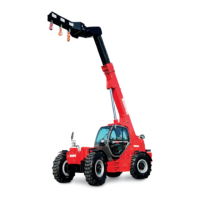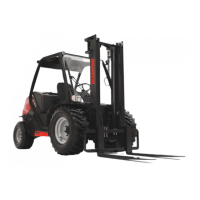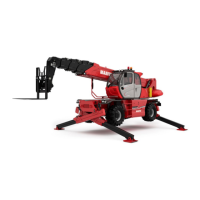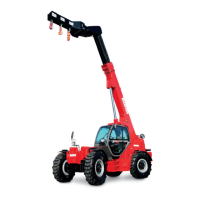1 - 6
INSTRUCTIONS TO THE COMPANY MANAGER
THE SITE
Proper management of lift truck's area of travel will reduce the risk of accidents:
• ground not unnecessarily uneven or obstructed,
• no excessive slopes,
• pedestrian traffic controlled, etc.
THE OPERATOR
- Only qualified, authorised personnel can use the lift truck. This authorisation is given in writing by the competent manager
in the establishment for the use of lift trucks and must be carried permanently by the operator.
t
IMPORTANT
t
Experience has shown that there are a number of inappropriate ways in which the lift truck might be used. Such foreseeable misuse, of which the main examples are listed
below, are strictly forbidden.
- The foreseeable abnormal behaviour resulting from ordinary negligence, but which does not result from any wish to put the machinery to any improper use.
- The reflex reactions of a person in the event of a malfunction, incident, fault, etc. during operation of the lift truck.
- Behaviour resulting from application of the "principle of least effort" when performing a task.
- For certain machines, the foreseeable behaviour of such persons as: apprentices, teenagers, handicapped persons, trainees tempted to drive a lift truck, operators
tempted to operate a truck for the purposes of a bet, a competition or for their own personal experience.
The person in charge of the equipment must take these criteria into account when assessing the suitability of a person to drive.
THE LIFT TRUCK
A-SUITABILITY OF THE LIFT TRUCK FOR THE JOB
- MANITOU has ensured that this lift truck is suitable for use under the standard operating conditions defined in this
operator's manual, with a STATIC TEST COEFFICIENT 1.25 and a DYNAMIC TEST COEFFICIENT OF 1, as specified in
harmonised standard EN 1459 for mast trucks.
- Before commissioning, the company manager must make sure that the lift truck is appropriate for the work to be done,
and perform certain tests (in accordance with current legislation).
B-ADAPTATION OF THE LIFT TRUCK TO STANDARD ENVIRONMENTAL CONDITIONS
- Our lift trucks are designed to be used within a temperature range of -18°C to +43°C.
- In addition to standard equipment mounted on your lift truck, many options are available, such as: road lighting, brake
lights, rotating beacon light, reversing lights, reversing sound alarm, front working light, rear working light, boom head
working light, etc.
(according to the lift truck model)
.
- The operator must take into account the operating conditions to specify the lift truck's signalling and lighting equipment.
Contact your dealer.
- Take into account the weather and atmospheric conditions of the site in use.
• Protection against frost (e3-MAINTENANCE: LUBRICANTS AND FUEL).
• Adaptation of lubricants (ask your dealer for information).
• Engine filtration (e3-MAINTENANCE: FILTER CARTRIDGES AND BELTS).
t
IMPORTANT
t
For use in average weather conditions, i.e. between -15°C and +35°C, the lubricants are topped up in the factory.
For operation under more severe climatic conditions, before starting up, it is necessary to drain all the circuits, then ensure correct levels of lubricants using lubricants
properly suited to the relevant ambient temperatures.
The same applies to the cooling liquid.
- Preventing fire risks associated with use in dusty and flammable conditions (e.g. straw, flour, sawdust, organic waste, etc.).
- A lift truck operating in an area without fire extinguishing equipment must be equipped with an individual extinguisher.
There are solutions, consult your dealer.
t
IMPORTANT
t
Your lift truck is designed for outdoor use under normal atmospheric conditions and indoor use in suitably aerated and ventilated premises.
It is prohibited to use the lift truck in areas where there is a risk of fire or which are potentially explosive (e.g. Refineries, fuel or gas depots, stores of flammable products,
etc.).
For use in these areas, specific equipment is available (ask your dealer for information).
- Our lift trucks comply with Directive 2004/108/EC concerning electromagnetic compatibility (EMC), and with the
corresponding harmonised standard EN 12895. Their correct operation is no longer guaranteed if they are used within
areas in which the electromagnetic fields exceed the limit specified by this standard (10 V/m).

